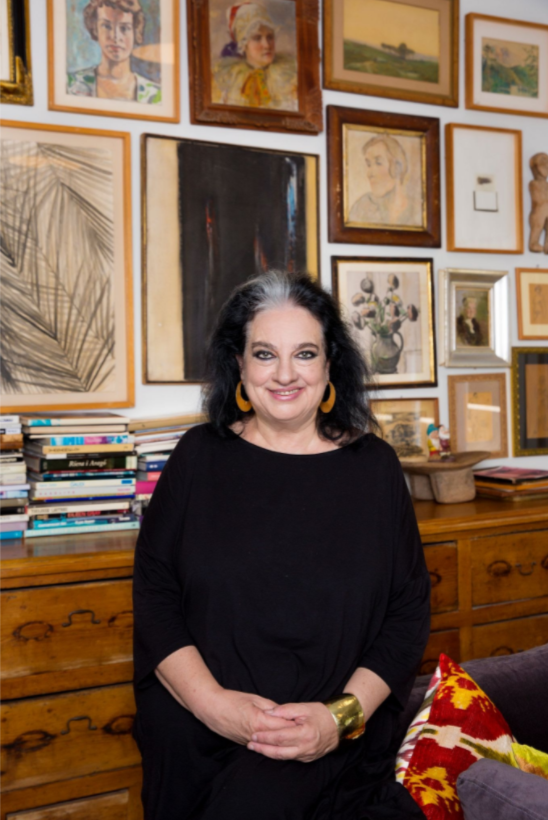In whispers and songs, silk faille and satin, cotton and wool, it reimagines the record of fashion, filling in the gaps and wardrobes of history with names and pieces long, and wrongly, forgotten; elevating them, finally, to the pedestals on which they belong.
New York Times



Recently, Alembika went on a field trip to The Metropolitan Museum of Art to see an exquisite exhibit called “Women Dressing Women,” a historic look at fashion from a feminine and a feminist perspective.
The exhibit celebrated over 70 female designers from The Costume Institute’s collection and was timed to Women’s History Month, amplifying historically underappreciated voices and those who have become household names.
Divided into four sections—anonymity, visibility, agency, and absence/omission—the exhibit took us through pivotal moments in fashion history as observed from a female perspective.
Anonymity

The anonymity section shed light on forgotten women in early 20th-century fashion, showcasing a photographic slideshow of atelier workers, acknowledging their contribution to the industry.
View the 3 minute slideshow here.
Visibility

The visibility segment focused on the emergence of successful female designers in France between the world wars, emphasizing the significance of allowing women to design womenswear. One highlight was a 1938 evening dress from the House of Paquin, designed by Ana de Pombo. The thoughtful design catering to the female figure.
Agency


In the agency section, the exhibit examined the evolution of women’s ready-to-wear clothing in the US while highlighting how female designers integrated social and artistic messages into their pieces. Seven subsections delved into nuanced trends, celebrating the creative agency of women designers. Stand out collections were “Reclaiming the Body” and “Empowerment Through Practice.”
Absence / Omission

The absence/omission section featured fashion typically left out of museum collections. It confronted the barriers faced by women designers, including legal issues and racial inequality. Especially notable was an Alexander McQueen silk-organza dress designed by Sarah Burton that symbolizes overcoming preconceived notions.






Reviewing women’s work throughout the centuries was uplifting, seeing how females were hidden, not acknowledged for their work, and as always, pushed their way out.
Who understands a woman’s body better than a woman?! And even there, it was dominated by males.
Yael Edelist, President of Alembika USA
As we strolled through the exhibit, we couldn’t help acknowledging award-winning designer, Hagar Alembik, founder of Alembika. She’s our own woman dressing women! Last spring, during Tel Aviv Fashion Week 2023, Hagar Alembik won the prestigious Lifetime Achievement Award for making a global impact throughout her 25 year fashion career. She was also recognized for being one of the most successful Israeli fashion designers and exporters in the world.


Since 2005, Hagar has developed her own design language to empower individuals with a personal expression and freedom to feel confident and beautiful just as they are. Her creations are available in thousands of boutiques around the world: USA, Australia, Belgium, Canada, England, France, Germany, Holland, Ireland, Italy and Spain as well as on Alembika.com.
Celebrating Women Dressing Women
Learn more about The Met’s Visitor’s Guide to Women Dressing Women. Up next is their not-to-be-missed Sleeping Beauty: Reawakening Fashion exhibit that will run from May – September.
Celebrate Women’s History All-Month-Long in an Alembika’s Female Leader Tee! The shirt says “Female Leader Wanted” in Hebrew (we concur!). Our empowered design is modeled by #AlembikaWomen, all leaders in their own right. This relaxed, oversized pullover feels more luxe than basic in soft-yet-substantial pure cotton. It washes beautifully, too. Clean crew neck, long sleeves with cuff detail, and cute little side slits.





You may also like HAGAR’S SIGNATURE TEE SHIRT. This limited-edition Tee Shirt spotlights an iconic dot and handwritten signature from our award-winning fashion designer, Hagar Alembik. Effortless pullover design, simply styled with crew neck, extended short sleeves (to cuff or not) and a clean, straight hem.



For all of you museum-goers …
… be sure to shop our curated Art Lover collection and read Fashion for Art Lovers, a curated collection of Alembika styles side-by-side with famous works of art for inspiration.
Happy Women’s History Month! Remember well-behaved women seldom make history. Go break some rules and get into some good trouble.





Great article about the Met and women’s fashion. You are all on the cusp of the 21st Century! Thank you